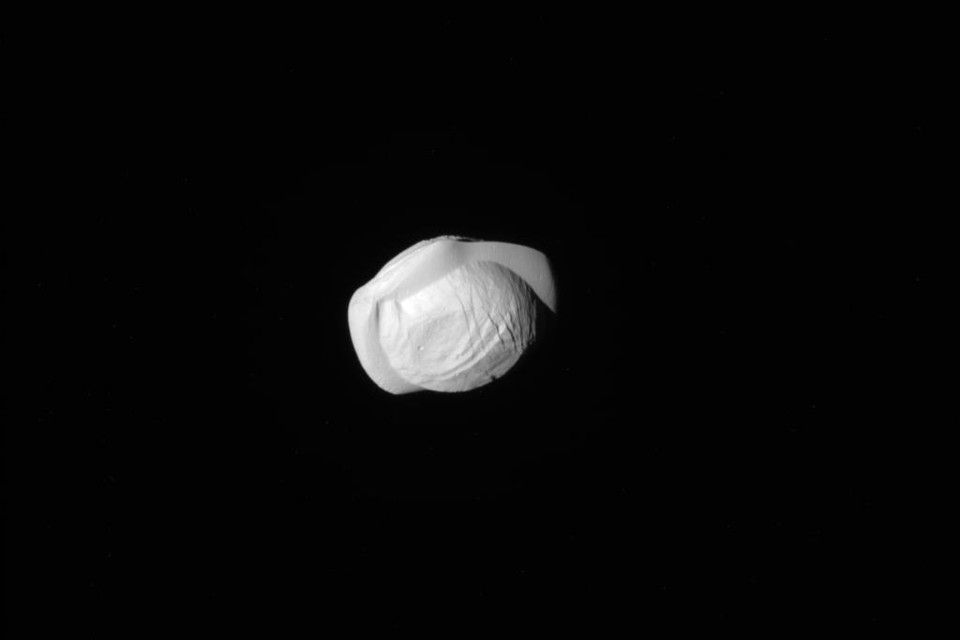| Topic: unique pics of "pan", a moon around Saturn | |
|---|---|
|
Edited by
mightymoe
on
Fri 03/10/17 07:44 AM
|
|
   Unlike many moons in the solar system, this one is more ravioli than round. That appears to be the favorite description for Pan, one of Saturn’s innermost known moons, which was photographed in unprecedented detail this week by the spacecraft Cassini. Other descriptions of Pan’s curious shape, gleaned from earlier images taken from a greater distance, liken the moon to a walnut or a flying saucer. All are pretty accurate. But there’s something about the latest photo that makes Pan look unmistakably pasta-like and doughy and almost edible—if it weren’t 17 miles across and floating out in space hundreds of millions of miles away. And finally, if you’re still not hungry, a GIF of Pan as it comes into Cassini’s view: (here) Pan gets its pasta-like shape from smooth bulges protruding on all sides from its center, known as equatorial ridges. The ridges lie in the same plane as Saturn’s rings. In 2007, researchers suggested that the ridge could be made up of particles from Saturn’s rings that got stuck on Pan when it was just an average moonlet. The same process may have occurred on Atlas, another moon, which orbits beyond the edge of Saturn’s A ring, one of the planet’s thickest bands of rings. Atlas has a distinct smooth ridge, too: Pan resides in a lane of its own making within the A ring. The moon maintains a 200-mile break in the ring, known as the Encke Gap, perpetually pushing on nearby ring particles and preventing them from filling in the space. It creates waves in the ring material as it goes, leading some of it to bunch up in certain spots. Pan is named for the Greek god of the wild and shepherds, a fitting moniker for a moon whose job is to keep the rings on either side of it in line. Cassini captured the close-ups of Pan as it moves closer and closer to Saturn, nearing the end of its 13-year mission around the planet. Next month, the spacecraft will plunge into Saturn’s upper atmosphere, photographing its final views as it goes, and disintegrate. |
|
|
|
|







